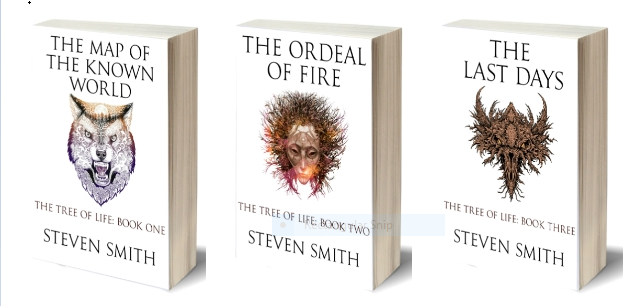|
We all love a memorable villain – they can elevate a story and challenge a hero to the utmost of their limits. Think about the unforgettable impact of characters such as Voldemort and Darth Vader; their deeds repel us, but we find them fascinating. The very best villains allow us to thrillingly explore those aspects of our personality we normally hide! So, if you are writing fantasy fiction, how can you create a villain that will excite and grip your readers? I know from writing The Tree of Life trilogy and This Sacred Isle, it can be a fun and demanding challenge. In this post I’ll look at three ways you can develop a worthy adversary for your hero. Make your villain three-dimensional. Never forget that your antagonist is a character, not just a convenient plot device. You must understand their motives and perspective. Everybody is the hero of their own story – however cruel and selfish our behaviour, we are all capable of holding an internal narrative that depicts our actions as noble and justified. If you make your villain evil for evil’s sake, they can come across as flat, one-note characters. Instead, strive to show what motivates their actions, what quirks of personality and experiences have driven their behaviour. A fine example of this is from Tad Williams’s majestic series Memory, Sorrow and Thorn. The chief protagonist is the Storm King, who although in many ways represents the typical ‘Dark Lord’ actually transcends this trope. The Storm King does not act out of simple-minded evil, for his dark sorcery is a reaction to the suffering and near annihilation of his people (the Sithi) at the hands of the humans. In my novel, This Sacred Isle, the main antagonist is Merlin – he is far removed from the wise, benevolent mentor of King Arthur. The slaughter of the Dark Ages and the suffering endured by his people has left him bitter and vengeful. Worn down by the cruelty of Man, he seeks to cleanse Britain of those he sees as usurpers. Yes, Merlin’s plan is merciless, but he believes, truly believes, he has no choice. A well-written villain should explore the darker sides of our nature, sides we all possess; they should ask an implicit question of the reader: “If I had their power, how would I act?” Make your villain a worthy foe You must make sure your antagonist is as least as strong as your hero. They should possess the very real ability and intent to ruin the hero’s life, for it is through meeting this challenge that the hero will prove worthy. If your hero can easily overwhelm the villain, where is the tension? In the traditional story arc, the hero should through the course of the story develop the skills, allies and strength required to face and defeat the villain. And villainy might not just be a simple test of physical strength or magical power. One of the ways an antagonist can threaten a hero is to try to exploit their weaknesses by tempting them to follow an evil path and betray their cause – the idea of a hero being corrupted is in some ways more chilling than any threat to their life. Think how close Luke Skywalker strayed towards the dark side. Consider how the One Ring all but consumed Frodo Baggins. The fact that such heroes were tempted by evil does not diminish their heroism – it humanises them, makes them relatable and actually elevates the bravery of their defiance. A villain should push the hero to the extreme, to the point where they question everything they have learned, everything they have believed. And it is at this moment, that true heroism is revealed. Keep your hero and villain in contact
For the purposes of your story, your hero and villain need each other, are often defined by each other. If they are in close proximity during the tale, then it is obviously easier for them to interact. However, do not despair if your story dictates they should rarely meet. This is where you can make use of proxies. The best way to do this is to employ effective proxies, not just mindless henchmen or henchwomen – use characters who have been twisted by the antagonist. A strong example of this comes in the Lord of the Rings; Sauron never meets Frodo, but he exerts his power through, among others, the Ringwraiths and Saruman, who have all been corrupted by the Dark Lord and thus demonstrate his strength and evil intent. Such proxies test a hero’s strength, resolve and abilities, and help to develop a sense of escalating danger as the story moves to the climatic moments. Who are your favourite villains? What makes them some memorable? Add a comment and join the conversation! If you are interested in my fiction, you can download the first novel in the Tree of Life series, The Map of the Known World, for FREE from Amazon, iBooks, Barnes and Noble, Kobo and Smashwords.
2 Comments
|
Archives
October 2023
Categories
All
|


 RSS Feed
RSS Feed